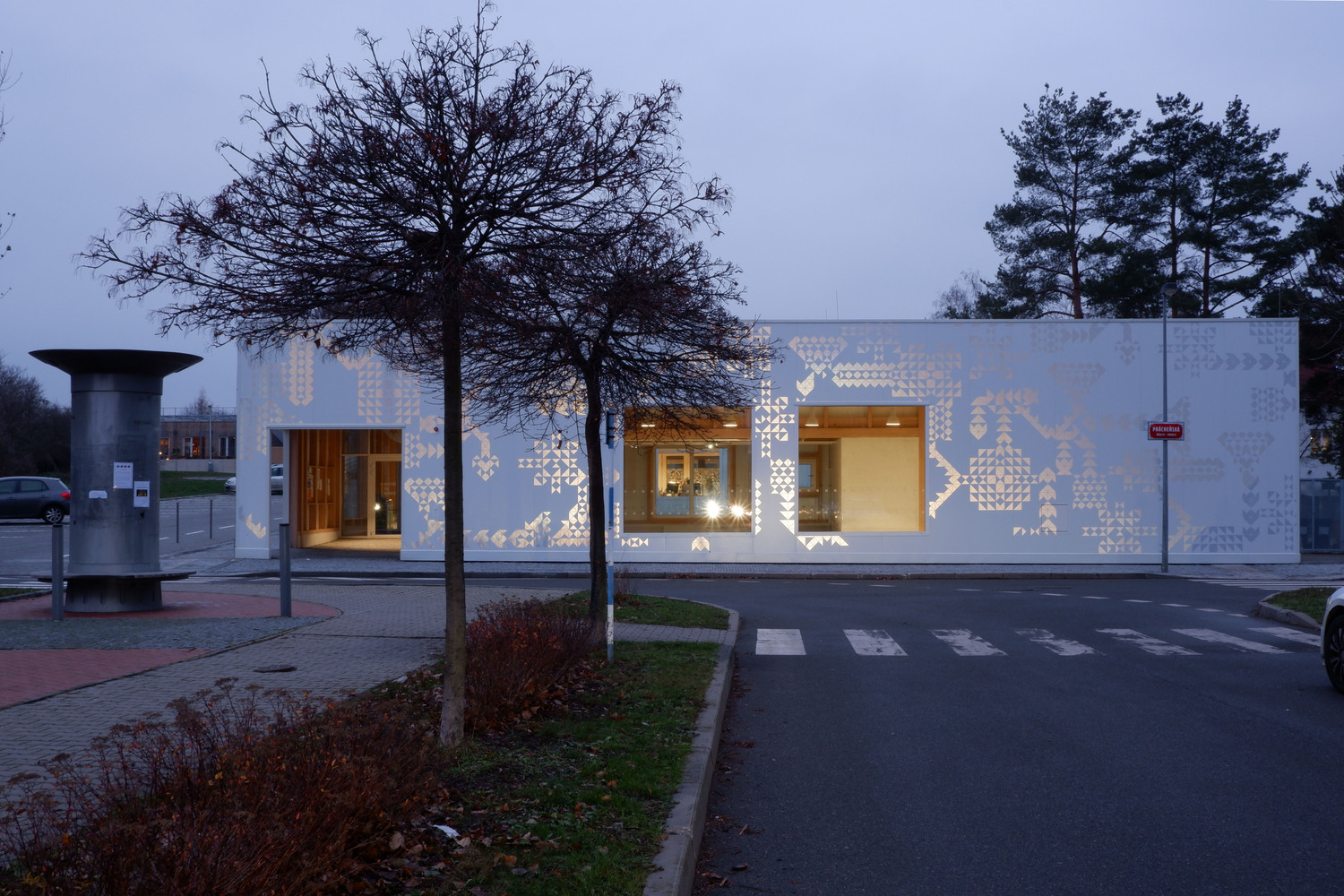Sustainable Hothouse C.F. Møller Architects
2013-12-24 01:00
Floor Plan


C.F.M ller建筑师与S ren jensen R dgivende Ingeni rfirma合作,赢得了在奥胡斯植物园建造一座新温室的建筑比赛。可持续设计、新材料和先进的计算机技术进入了温室有机形态的创造。
C. F. Møller Architects, in co-operation with Søren Jensen Rådgivende Ingeniørfirma, has won the architectural competition for a new hothouse in Aarhus Botanic Garden. Sustainable design, new materials and advanced computer technology went into the creation of the hothouse's organic form.
© Julian Weyer
朱利安·韦耶


奥胡斯植物园的蜗牛形温室是温室建筑中的一个国家标志。它是由C.F.M ller建筑师于1969年设计的,并且很好地适应了周围的环境。因此,在设计新温室时必须牢记现有的建筑价值。
The snail-shaped hothouse in the Botanic Garden in Aarhus is a national icon in hothouse architecture. It was designed in 1969 by C. F. Møller Architects, and is well adapted to its surroundings. Accordingly, it was important to bear the existing architectural values in mind when designing the new hothouse.
© Quintin Lake
昆廷湖


建筑师兼建筑师汤姆·丹尼尔森(Tom Danielsen)表示:“这场竞赛寻求的是一座独立而独特的新棕榈树屋,但我们必须确保这座新建筑在与旧棕榈树的互动中发挥良好的作用。”
"The competition sought an independent and distinctive new palm house, but it was essential for us to ensure that the new building would function well in interplay with the old one," says Tom Danielsen, architect and partner with C. F. Møller Architects.
© Julian Weyer
朱利安·韦耶


有机的形式和庞大的体积,公众可以在树梢之间探索,展示植物学和穿越不同气候区的旅程,这将使奥胡斯的新温室成为未来欧洲温室建筑中的一个吸引人的地方。
The organic form and the large volume, in which the public can go exploring among the tree-tops, present botany and a journey through the different climate zones in a way which will make the new hothouse in Aarhus a future attraction in a pan-European class in hothouse architecture.
© Quintin Lake
昆廷湖


能量设计
Energy design
新温室的设计基于节能设计方案和材料、室内气候和技术知识。
The design of the new hothouse is based on energy-conserving design solutions and on a knowledge of materials, indoor climate and technology.
© Julian Weyer
朱利安·韦耶


建筑师和工程师利用先进的计算方法,优化了建筑物的结构,确保其形式和能源消耗以最佳的方式相互作用,并最佳地利用阳光。选择圆顶形状和建筑物相对于指南针点的方向,是因为这种精确的格式提供了最小的比表面积和最大的体积,以及冬季可能的最佳阳光入射量,以及夏季的可能性最小。
Using advanced calculations, the architects and engineers have optimised their way to the building's structure, ensuring that its form and energy consumption interact in the best possible manner and make optimal use of sunlight. The domed shape and the building's orientation in relation to the points of the compass have been chosen because this precise format gives the smallest surface area coupled with the largest volume, as well as the best possible sunlight incidence in winter, and the least possible in summer.
© Julian Weyer
朱利安·韦耶


植物知识中心
Botanical knowledge centre
整个计划还包括全面修复旧温室,使棕榈屋成为面向公众的新的植物知识中心,同时将综合设施与新的热带温室扩建。该项目将于2013年完成。
The total project also includes a comprehensive restoration of the old hothouse, in which the palm house will become a new botanical knowledge centre aimed at the general public, at the same time as the complex is extended with the new tropical hothouse. The project will be completed in 2013.
Exploded Axonometric
爆炸轴测


















































































Architects C.F. Møller Architects
Location Møllevejen, 8000 Aarhus, Denmark
Category Educational Architecture
Architect in Charge C.F. Møller Architects
Area 3300.0 sqm
Project Year 2012
Photographs Julian Weyer, Quintin Lake
























